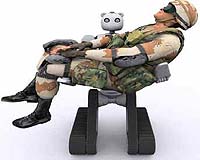Flapping wings might be better than rotors for a small surveillance UAV, engineers with the French aerospace research agency ONERA said June 18 at the 47th Paris Air Show.ONERA’s simulation studies on a third-generation micro air vehicle dubbed
Remanta show that such wings used less energy than a mini-helicopter design while delivering speedy flight, hover, endurance and agility, engineers Agnès Luc Boulah and Bruiec Danet said.
The Remanta is a partial demonstrator with a 15-centimeter wing and endurance of around 10 minutes. The micro-drone would fly on a programmed route into confined spaces, perform urban reconnaissance and send imagery for target acquisition and designation. The range would be a few hundred meters and include day/night capability.
Actuators would drive the flapping carbon-fiber wings. The major challenge is finding the power source, which must be compact and deliver 10 to 20 watts. Advances in power cells for mobile phones show promise.
A working demonstrator could be fielded in 10 years, the engineers said.
Labs in Cranfield and Shrivenham in Britain, German researchers and DARPA are also working on flapping wings for micro aerial vehicles.
 Got a destination too dirty or dangerous for a person to want to go there? The day could soon come when a robot vehicle takes humans' place as a matter of course.
Got a destination too dirty or dangerous for a person to want to go there? The day could soon come when a robot vehicle takes humans' place as a matter of course.














